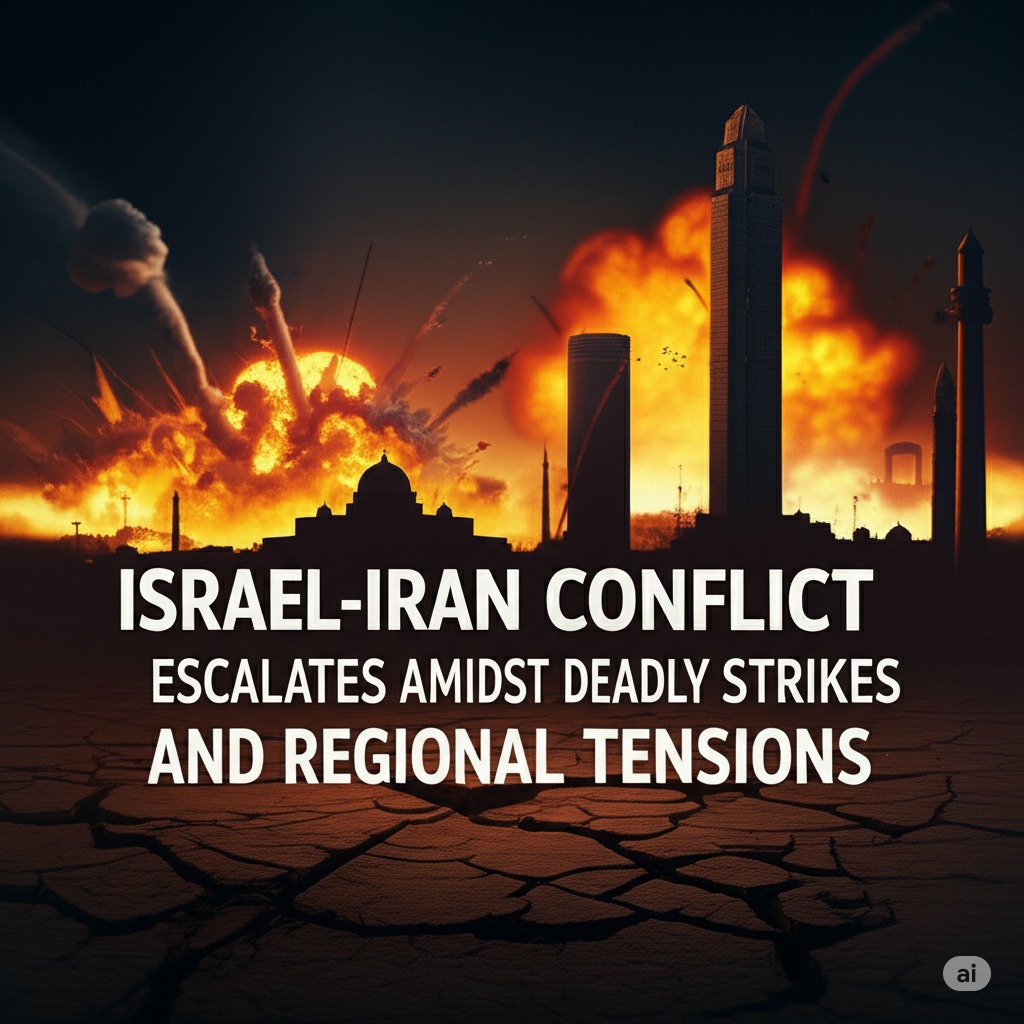Israel-Iran Conflict Escalates Amidst Deadly Strikes and Regional Tensions
Published on June 16, 2025 | Generated by AI
 🤖 AI-generated Image
🤖 AI-generated Image
Why It Matters
The long-simmering animosity between Israel and Iran has boiled over into direct military confrontations, marking a dangerous new phase in Middle East dynamics. This escalation, highlighted by recent direct strikes and rising casualty counts, puts regional stability at severe risk and tests international diplomacy. Key actors, including the United States and regional powers, are closely monitoring the situation as the potential for a wider conflict remains acutely high, impacting global security and energy markets.
Background & Timeline
Tensions have steadily mounted in recent years, fueled by Iran's nuclear ambitions and its ballistic missile program, alongside Israel's persistent efforts to prevent Iran from establishing a military foothold near its borders, particularly in Syria. While direct military engagements between the two states were historically rare, relying instead on proxies, this dynamic has shifted dramatically, culminating in the recent exchange of direct strikes. This represents a significant departure from the 'shadow war' playbook and signals a dangerous escalation in hostilities.
What’s Happening Now
- June 16, 2025: Israel and Iran exchange direct attacks for the third consecutive day, with Israel conducting "extensive series of strikes" on targets including the Iranian Defence Ministry HQ and the SPND nuclear project, while air defense systems were activated in Tehran. Sirens and booms were heard in Jerusalem.
- June 16, 2025: Iranian Health Ministry reports that 224 people have been killed since Israeli attacks began, with over 90% reported as civilians, highlighting the severe human toll of the conflict.
- June 16, 2025: Israeli Prime Minister Benjamin Netanyahu confirms an Israeli strike killed the intelligence chief of Iran's Revolutionary Guards, a significant development raising concerns about further retaliation.
- June 16, 2025: Amidst the escalating conflict, India is carefully balancing its ties with both nations, while also taking steps to ensure the safety of its citizens in Iran, including relocating students to safer areas within the country.
- June 15, 2025: Reports emerge that former US President Donald Trump previously vetoed an Israeli plan to assassinate Iran's Supreme Leader, Ayatollah Ali Khamenei, indicating the depth of strategic considerations surrounding high-level targets.
What Could Happen Next
-
1. Full-Scale War – Reason: Continued tit-for-tat strikes, miscalculation, or an attack on a highly symbolic target could quickly spiral out of control. Expected consequences: Widespread regional conflict involving proxies, significant casualties, disruption of global energy supplies, potential intervention by global powers, and devastating humanitarian impact.
2. Return to Shadow War – Drivers: International pressure for de-escalation, realization of the high costs of direct conflict by both sides. Risks: While direct confrontation might lessen, the proxy conflicts would likely intensify, maintaining regional instability and the risk of future flare-ups, potentially involving cyber warfare and targeted assassinations.
3. Tense Stand-off – Low/High Probability: Moderate probability. Both sides might pause direct hostilities after achieving perceived deterrence or facing internal/external constraints. Justification: Neither side may seek a protracted, costly war, leading to a period of reduced open conflict but continued high tension, military posturing, and indirect confrontation through proxies, leaving the underlying issues unresolved and vulnerable to renewed escalation.
This article is generated using AI-assisted summaries and verified timelines.
